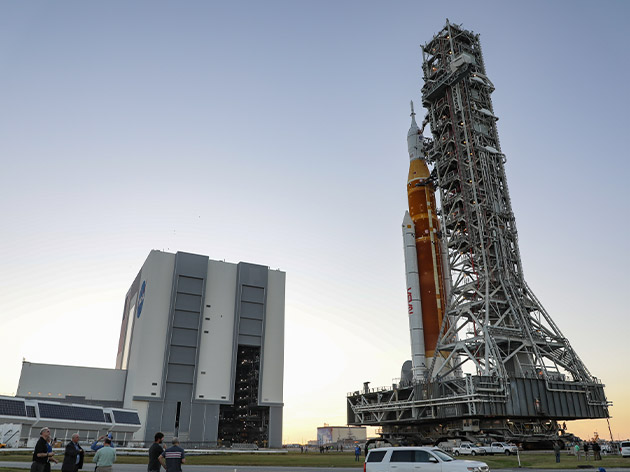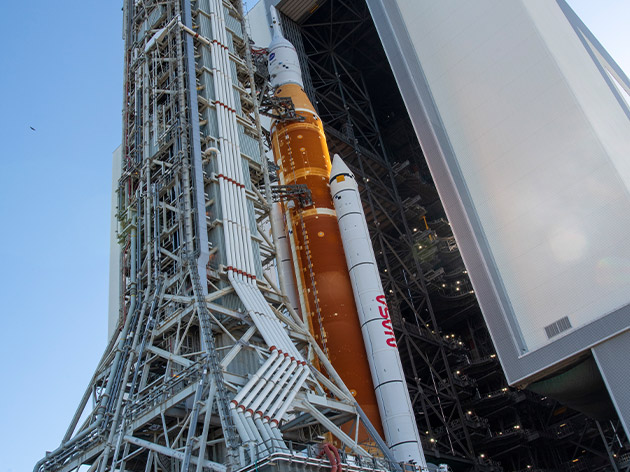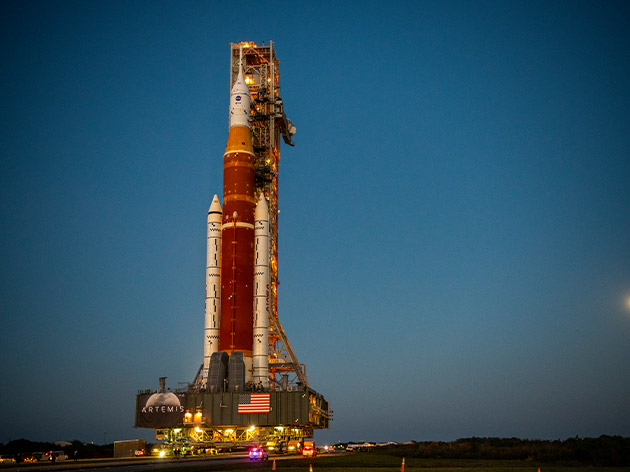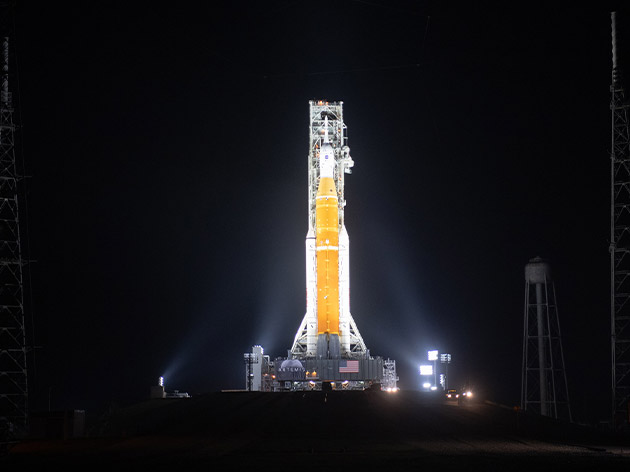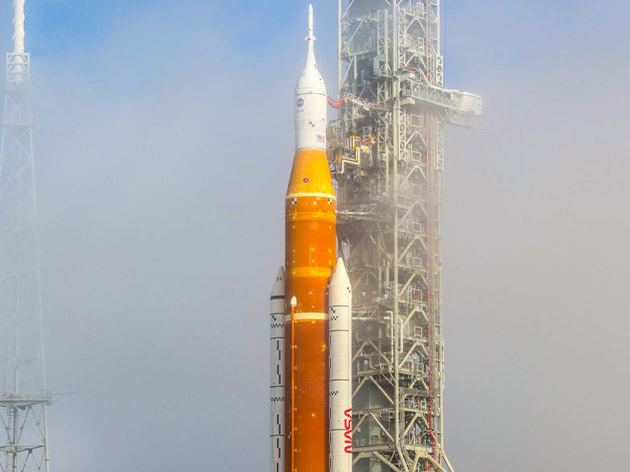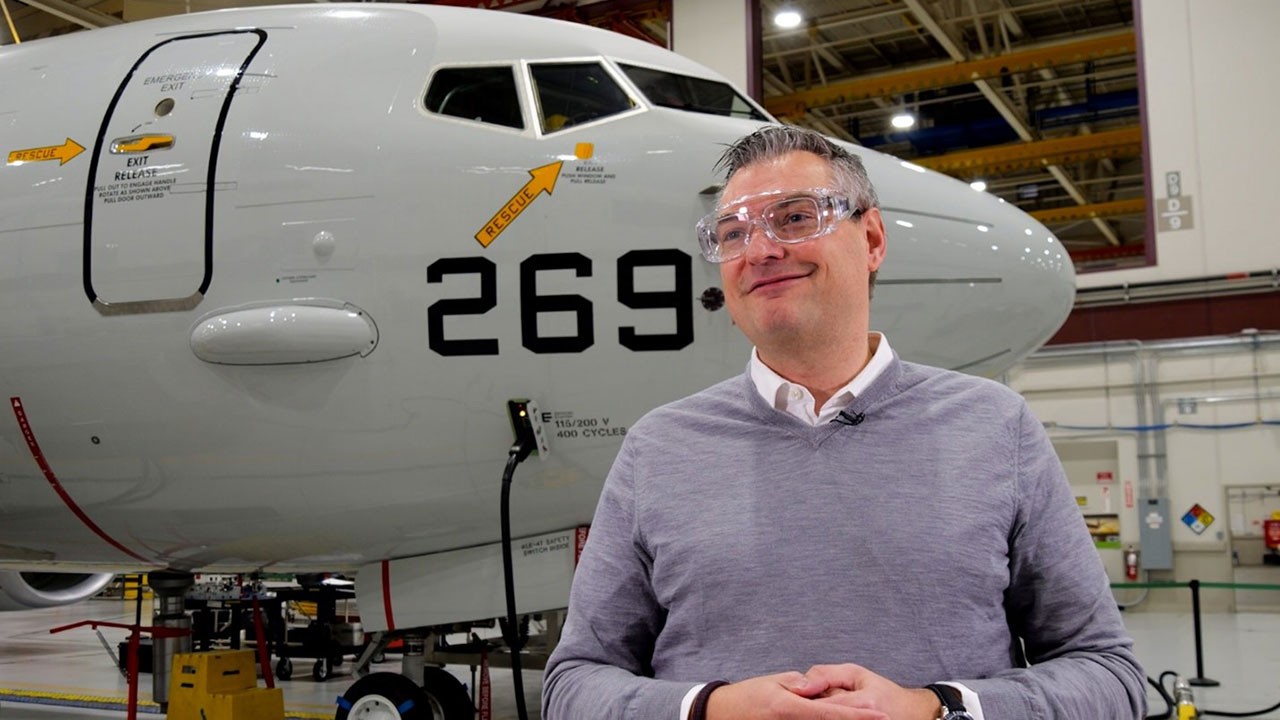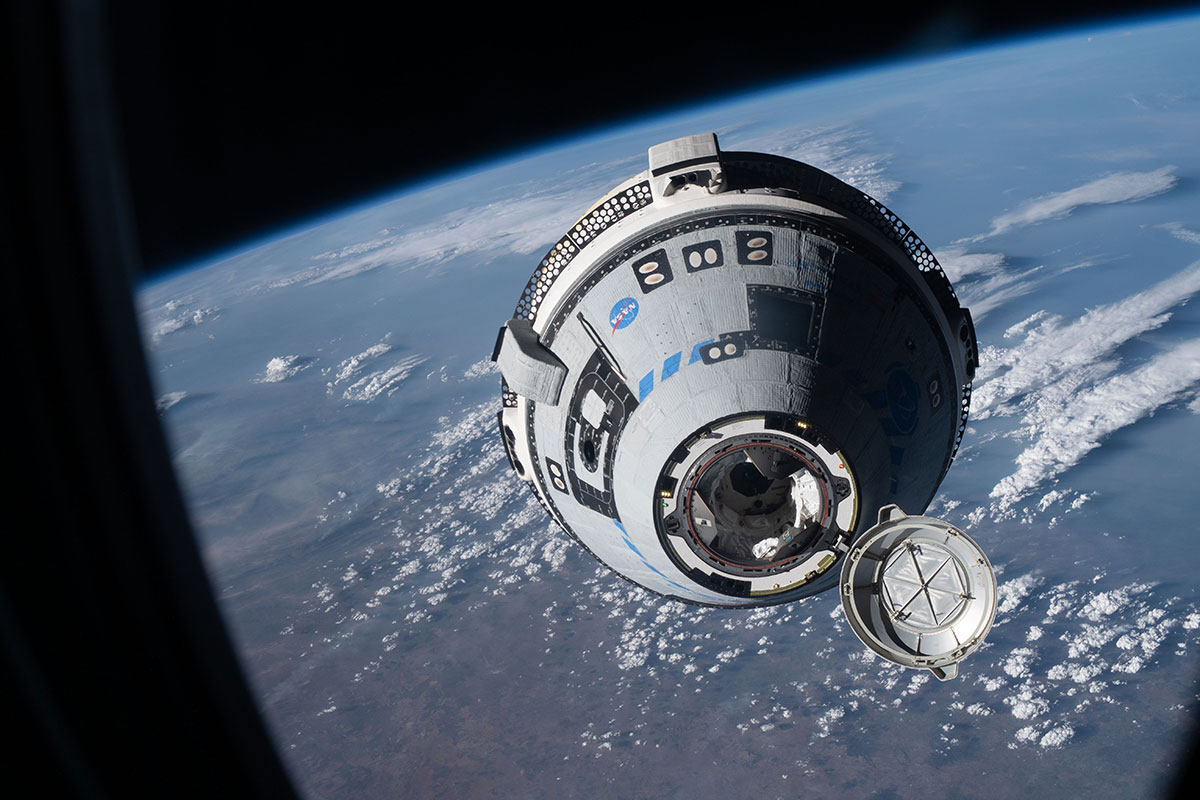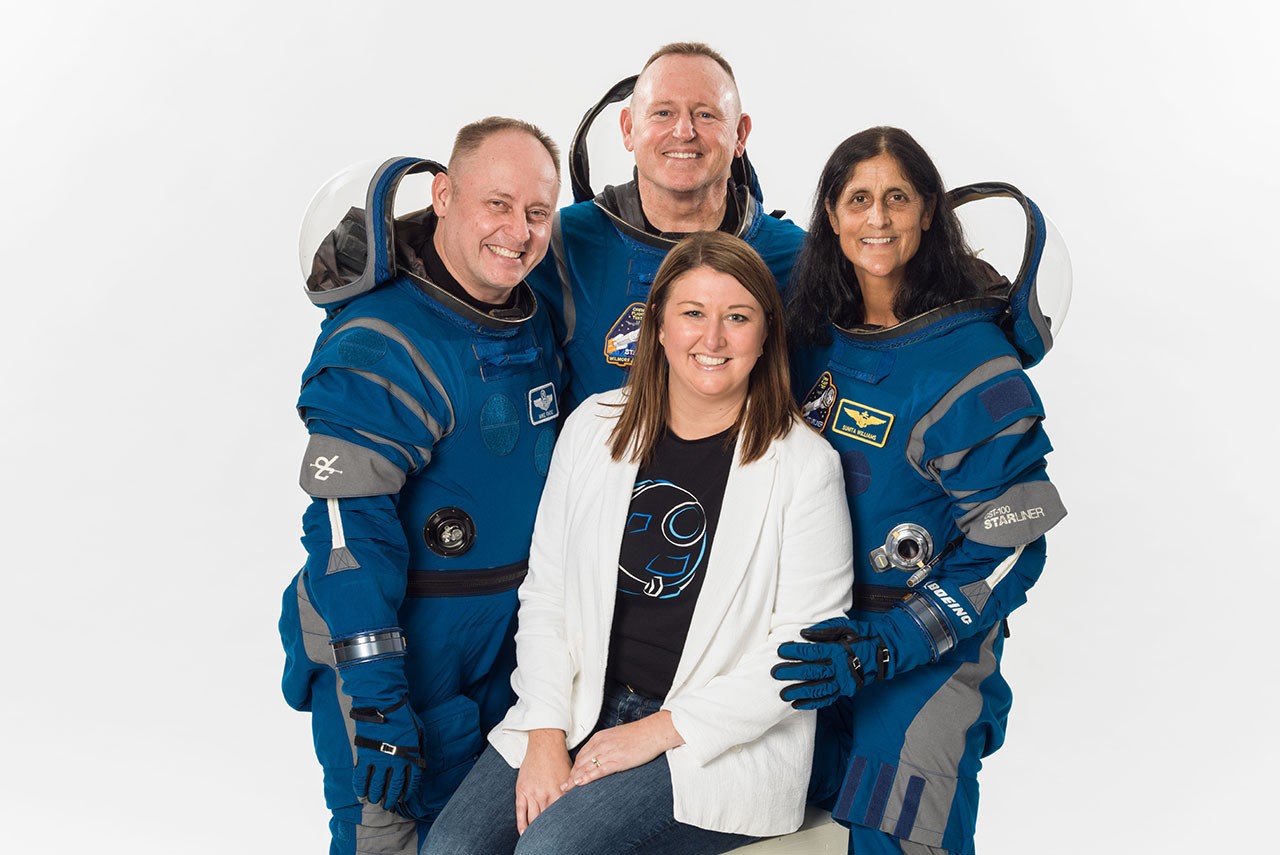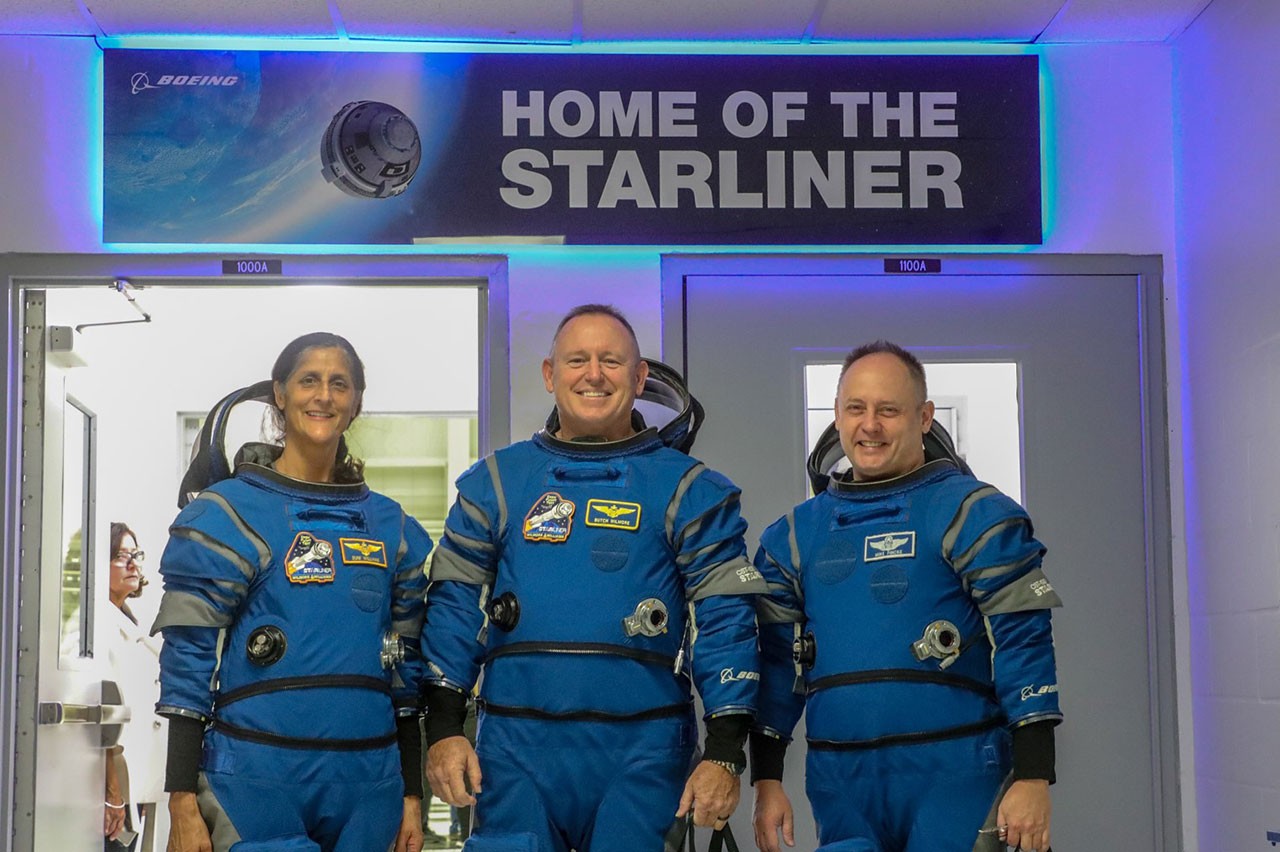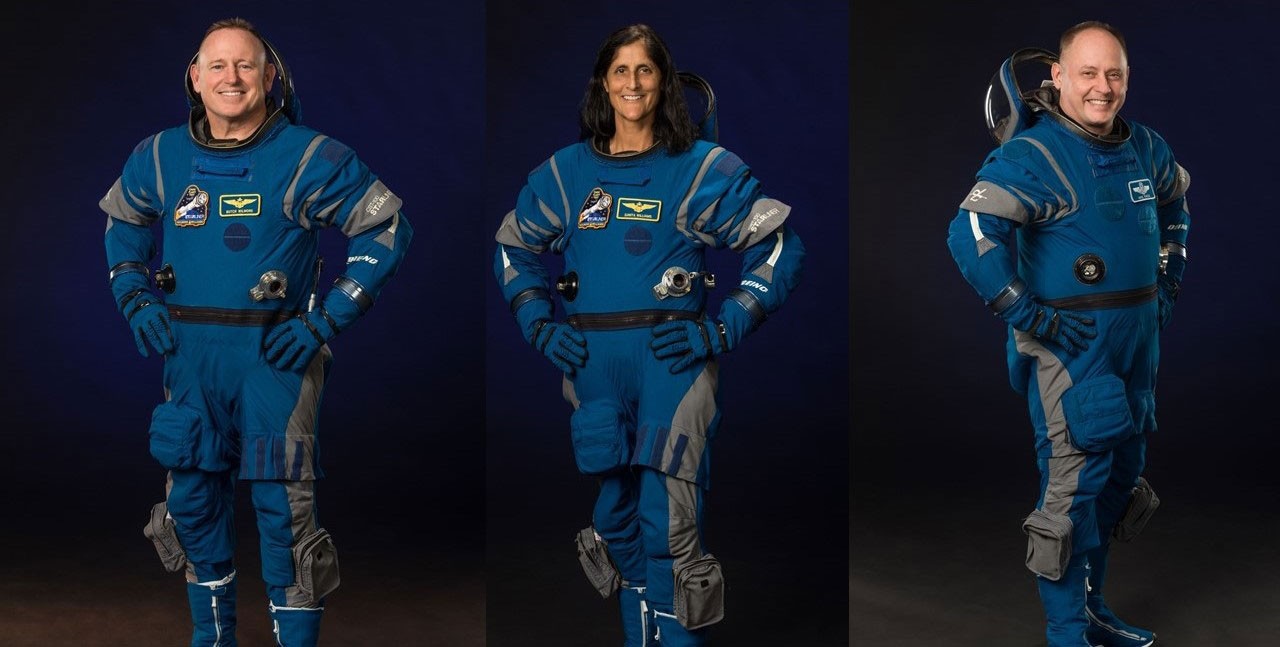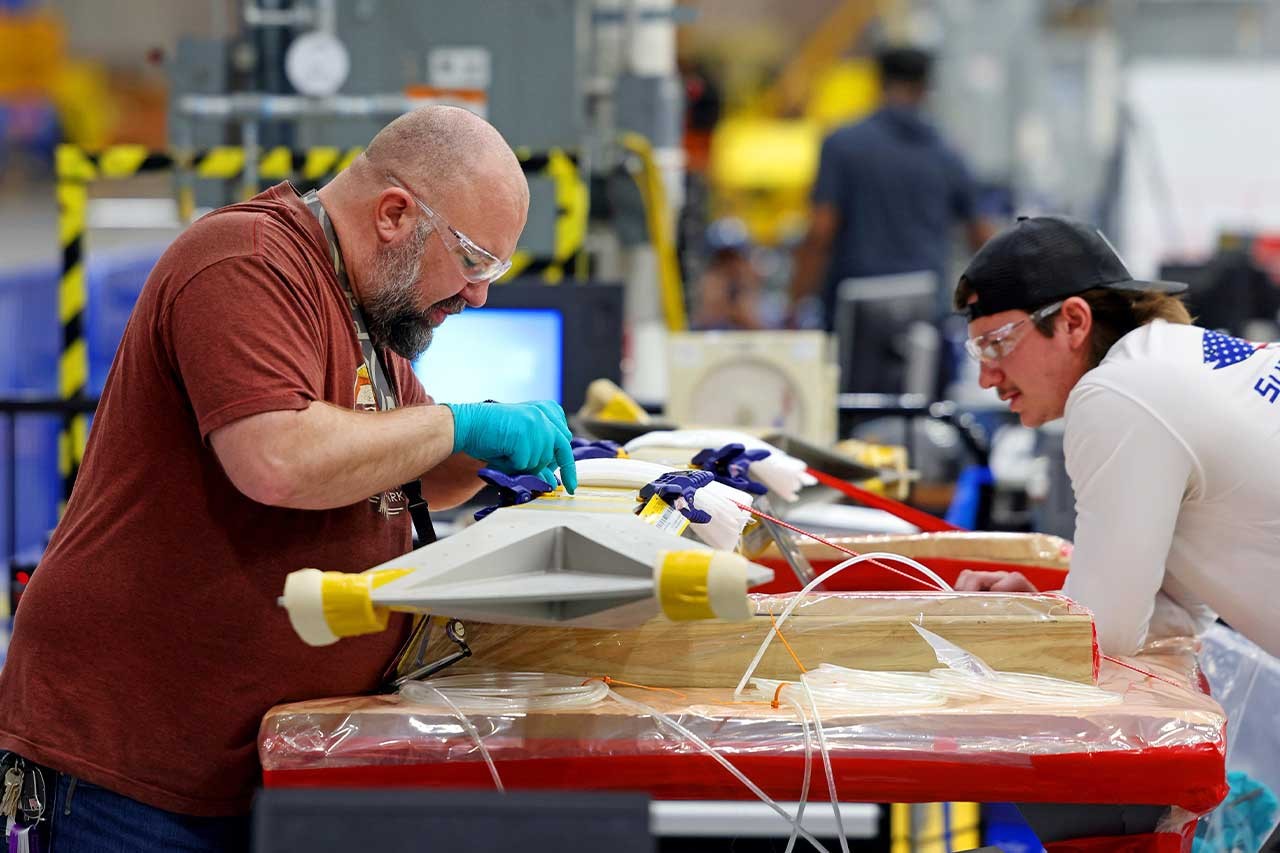Artemis Stack Debuts in Florida
Artemis I launch vehicle moves to launch pad for Wet Dress Rehearsal
- SLS 1
- SLS 2
- SLS 3
- SLS 4
- SLS 5
Space workers took their first look on Thursday at a complete Artemis stack unencumbered by work platforms when NASA rolled the rocket and spacecraft combination to Launch Complex 39B at NASA’s Kennedy Space Center in Florida.
Illuminated by banks of spotlights as it emerged from the Vehicle Assembly Building (VAB) into evening darkness, the 32-story launch vehicle began a 4-mile trip to the launch pad that would take about 11 hours to complete.
The last time a human-rated rocket as large as Artemis was positioned on a launch pad, Richard Nixon was president, gas cost 36 cents a gallon and Eminem was two months old.
Then as now, Boeing provided large rocket stages to the full stack. This time, those stages are the Space Launch System (SLS) core stage, which by itself stands 212 feet tall and holds 733,000 gallons of super-cold fuel and oxygen, and the Interim Cryogenic Propulsion Stage (ICPS) which was built by United Launch Alliance.
“This day is pretty overwhelming and surreal,” said Kristine Ramos, Business Development Lead for Space Launch System and Science Mission Directorate. “I’ve worked on this project since its inception – since it was a design on a page. I have a mix of emotions ranging from pride to excitement. What I am most looking forward to will be watching the reactions of my team members. It will be a very emotional time for us all, reflecting on the incredible work and innovation we accomplished together.”
A bright Florida dawn showed teams of technicians taking on the earliest stages of work to connect the mobile launch tower and rocket with the power, propellant, water and data infrastructure at the pad complex that would make liftoff possible.
That liftoff will not come after this journey to the pad though. This rollout, the first of the Artemis program intended to return astronauts to the Moon, instead sets the stage for an intensive practice countdown called a “wet dress rehearsal.” The run through will see the massive fuel and oxygen tanks of the core stage and upper stage filled, the avionics systems powered up and the engines swiveled just as they will ahead of a launch. All the systems will be shut down before the engines ignite, however.
After the Artemis stack is rolled back to the VAB and the data is examined, technicians will put the finishing touches on the rocket and spacecraft and pack the last elements of cargo.
“I am in awe of both the rocket and what our teams have accomplished,” said Brandon Burroughs, Business Development for Space Launch System. “I am so humbled to work on a program that is progressing the mission of returning astronauts to the Moon.”
With everything set, the rocket and spacecraft will return the rocket to the launch pad to begin the Artemis I mission. That mission, which will last several weeks, will see the Orion spacecraft – without any astronauts aboard - circle the Moon and maneuver in space before returning to Earth.
Getting the Orion safely on its precise path to lunar orbit is the job of the Space Launch System. Powered by four engines and equipped with a suite of avionics, the core stage will work with a pair of solid-fueled booster rockets to generate more than 8 million pounds of thrust and lift NASA’s 27-ton Orion spacecraft off the launch pad and onto a course around the Earth. After about 8 minutes, the core stage will fall away and the ICPS will kick in to speed Orion out of Earth's orbit and toward the Moon.
Although the mission recalls the grand adventures of Apollo, the Artemis program is meant to take place over the course of many SLS and Orion launches that are to kick off sustained exploration of the Moon utilizing technologies and innovations developed and perfected aboard spacecraft ranging from the space shuttle and International Space Station to commercial crew vehicles such as Starliner. Orbiting 250 miles above Earth, astronauts are preparing for the day when we transport explorers approximately 250,000 miles to the Moon, then 140 million miles to Mars.
Follow progress on the Artemis mission at Boeing.com and on Twitter @BoeingSpace.
